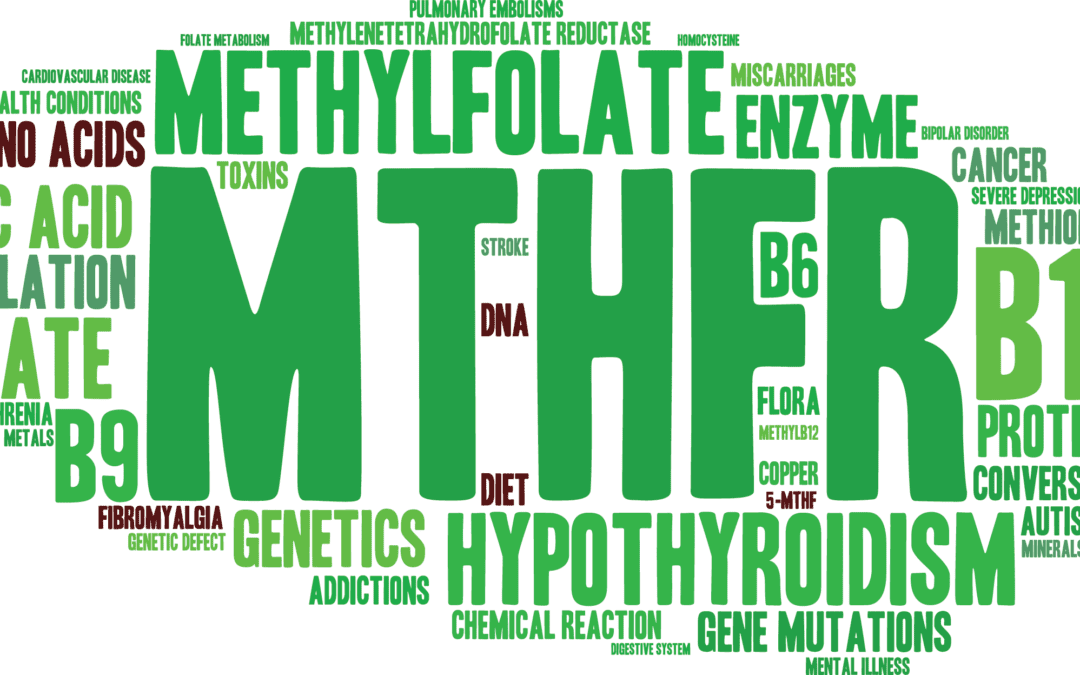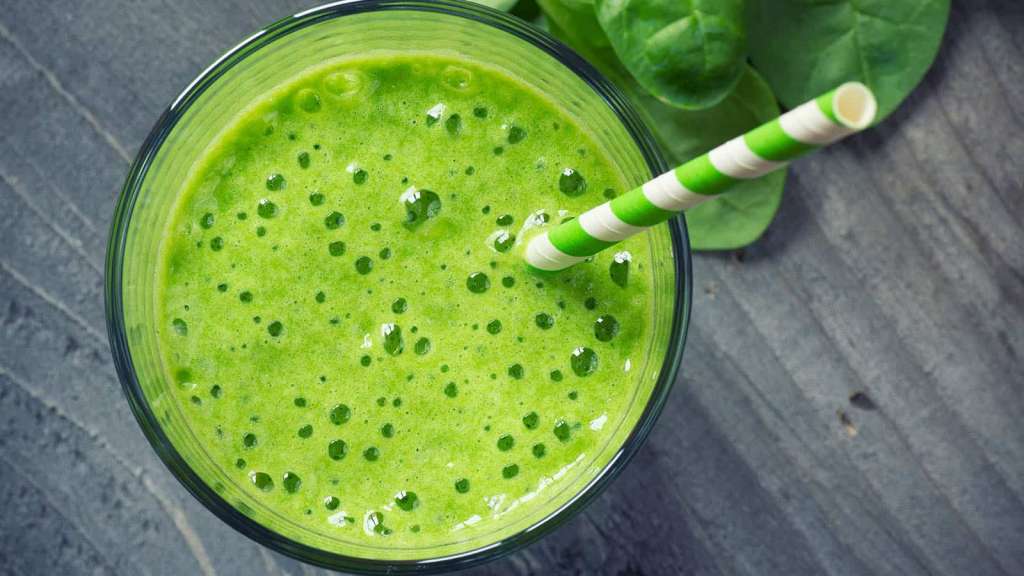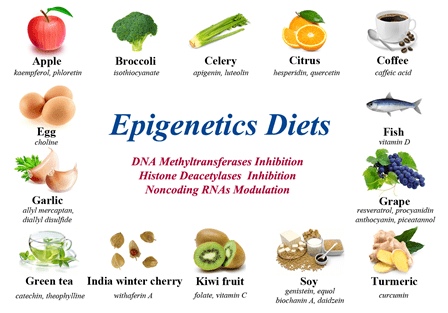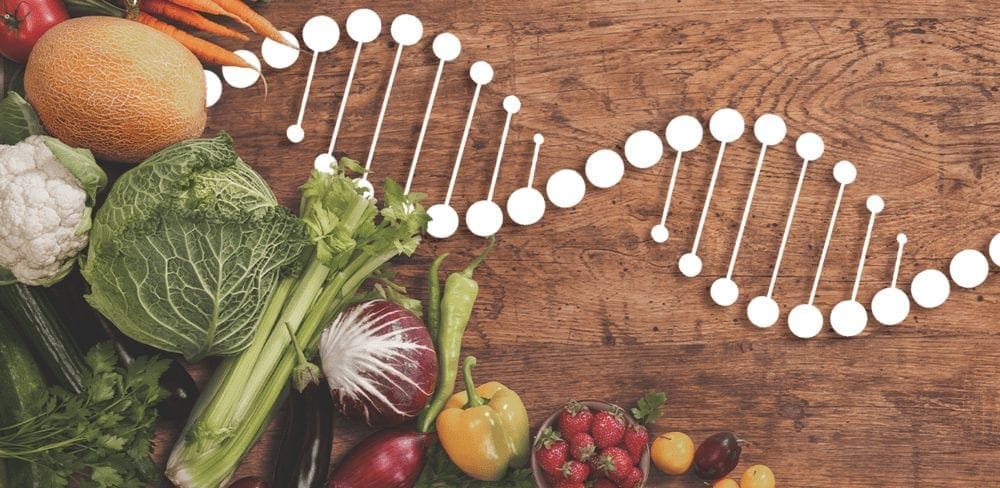Epigenetic’s
Back Clinic Epigenetics Functional Medicine Team. The study of heritable changes in gene expression (active versus inactive genes) does not involve changes to the DNA sequence, a change in phenotype without a change in genotype, which affects how cells read genes. An epigenetic change is a regular, natural occurrence that can also be influenced by several factors: age, environment, lifestyle, and disease state. Epigenetic modifications can commonly manifest as how cells terminally differentiate into skin cells, liver cells, brain cells, etc. And epigenetic change can have more damaging effects that can result in diseases.
New and ongoing research is continuously uncovering the role of epigenetics in a variety of human disorders and fatal diseases. Epigenetic marks are more stable during adulthood. However, they are still thought to be dynamic and modifiable by lifestyle choices and environmental influence. It is becoming apparent that epigenetic effects do not just occur in the womb but over the full course of human life. Another discovery is that epigenetic changes can be reversed. Numerous examples of epigenetics show how different lifestyle choices and environmental exposures can alter marks on DNA and play a role in determining health outcomes.

by Dr Alex Jimenez DC, APRN, FNP-BC, CFMP, IFMCP | Acupuncture Therapy, Adrenal Fatigue (AF), Alzheimer's, Anti Aging, Athletes, Auto Accident Injuries, Back Pain, Basal Metabolic Index (BMI), Car Accident Specialist, Chiropractic Examination, Complex Injuries, Depression, Detoxification, Epigenetic's, Fibromyalgia, Fibromyalgia, Fitness, Functional Medicine, Healthcare Providers, Hip Pain & Disorders, Human Physiology, Neuropathy, Personal Injury, Sciatica, Severe Back Pain, Treatments, Wellness, Whiplash
Dr. Alex Jimenez: Pioneering Integrative Care as a Chiropractor and Nurse Practitioner
Dr. Alex Jimenez, a licensed chiropractor and board-certified nurse practitioner based in El Paso, Texas, brings over 25 years of expertise to his Injury Medical & Chiropractic Clinic practice. His dual licensure provides unique insights into the etiologies, pathogenesis, and treatment of complex clinical conditions, enabling him to deliver patient-centered, integrative care that bridges physical medicine, functional medicine, and advanced diagnostics. Combining chiropractic expertise with nurse practitioner-driven medical management, Dr. Jimenez offers comprehensive treatment protocols tailored to acute and chronic conditions, promoting metabolic resilience, longevity, and whole-person wellness.
Dual Expertise: Chiropractic and Nurse Practitioner Roles
Dr. Jimenez’s practice stands out due to his ability to integrate the biomechanical focus of chiropractic care with a nurse practitioner’s diagnostic and therapeutic scope. As a chiropractor, he specializes in restoring musculoskeletal function, particularly after trauma, neck, back, spine, and soft tissue injuries. His chiropractic interventions emphasize non-invasive techniques, such as spinal decompression, manual adjustments, and functional rehabilitation, to alleviate pain and enhance mobility.
As a board-certified nurse practitioner, Dr. Jimenez employs evidence-based medicine to address systemic and metabolic dysfunctions. His expertise extends to managing chronic degenerative disorders, hormonal imbalances, weight loss, sexual health, and pain syndromes. This dual perspective allows him to identify underlying disease causes, from biomechanical misalignments to physiological imbalances, and design treatment regimens that address symptoms and root causes.
The synergy of these roles enables Dr. Jimenez to offer a holistic approach that is particularly effective for complex conditions such as sciatica, fibromyalgia, disc herniation, spondylolisthesis, and chronic neck or back pain. His integrative protocols combine functional medicine assessments, lifestyle interventions, and advanced diagnostics to achieve homeostasis and physiological balance.
Treatment Protocols: Evidence-Based and Patient-Centered
Drawing from integrative protocols outlined on his website, www.chiromed.com, Dr. Jimenez employs a multidisciplinary approach to patient care. His treatment plans are grounded in evidence-based medicine, functional medicine, and lifestyle wellness strategies, tailored to each patient’s unique health profile, lifestyle, and medical history. Below are key components of his integrative care model:
1. Chiropractic Care and Functional Rehabilitation
- Spinal Decompression: Non-surgical decompression therapy is used to relieve pressure on spinal discs, addressing conditions like disc herniation, sciatica, and spinal stenosis. This modality promotes healing by improving blood flow and nutrient delivery to affected areas.
- Manual Adjustments: Targeted adjustments correct spinal misalignments, reduce nerve compression, and restore joint mobility. These are particularly effective for whiplash, scoliosis, and poor posture.
- Functional Strength Training: Dr. Jimenez designs conditioning programs to enhance recovery and prevent re-injury. These programs are tailored for athletes and individuals seeking optimal performance and incorporate mobility, flexibility, and agility training.
2. Functional Medicine Assessments
- Functional medicine tools evaluate metabolic, hormonal, and nutritional status. These assessments identify the root causes of conditions such as fatigue, weight gain, or chronic pain, enabling precise interventions.
- Advanced diagnostic protocols, including blood panels and imaging, provide data-driven insights into etiologies and pathogenesis. This allows Dr. Jimenez to address underlying dysfunctions rather than merely masking symptoms.
3. Lifestyle and Nutritional Interventions
- Weight Loss and Metabolic Resilience: Dr. Jimenez integrates nutritional counseling and metabolic optimization strategies to support sustainable weight loss and prevent chronic diseases like diabetes or cardiovascular disorders.
- Hormone and Sexual Health: Personalized regimens address hormonal imbalances and sexual dysfunction, improving quality of life and overall wellness.
- Pain Management: Nutritional and lifestyle modifications complement physical therapies to manage chronic pain syndromes, reducing reliance on pharmaceuticals.
4. Specialized Care for Complex Conditions
- Sciatica and Disc Injuries: Dr. Jimenez employs targeted decompression and rehabilitation protocols to alleviate nerve compression and restore function.
- Chronic Degenerative Disorders: Conditions like fibromyalgia, arthritis, and spondylolisthesis are managed through integrative plans that combine physical therapy, nutritional support, and metabolic optimization.
- Sports and Auto Accident Injuries: Tailored rehabilitation programs address soft tissue damage, shoulder injuries, and whiplash, ensuring rapid recovery and long-term resilience.
5. Advanced Wellness Programs
- Dr. Jimenez’s clinic offers comprehensive wellness programs on longevity, skin care, and hair loss. These programs integrate nutritional supplementation, lifestyle coaching, and cutting-edge therapies to promote vitality and aesthetic health.
- High-level conditioning programs optimize performance for athletes, incorporating functional strength training and recovery-focused interventions.
Integrative Team and Clinic Highlights
Injury Medical & Chiropractic Clinic is El Paso’s largest mobility, flexibility, and agility center, integrating chiropractors, nurse practitioners, registered nurses, nutritionists, and physical performance trainers. The clinic’s multidisciplinary team collaborates to deliver personalized care, ensuring patients achieve measurable health outcomes. Key services include:
- Acupuncture: A Complementary therapy to reduce pain and promote relaxation.
- Advanced Nutritional Programs: Evidence-based dietary plans to support metabolic health and recovery.
- Physical Performance Training: Programs to enhance fitness, prevent injuries, and optimize athletic performance.
The clinic accepts major insurances, including Aetna, Blue Cross Blue Shield, Cigna, and First Health, making care accessible to a broad patient base.
Insights from Dual Licensure
Dr. Jimenez’s licensure as both a chiropractor and nurse practitioner provides him with a comprehensive understanding of disease processes and treatment modalities. His chiropractic training equips him to address biomechanical dysfunctions, while his nurse practitioner expertise allows him to manage systemic conditions with a medical lens. This dual perspective enhances his ability to:
- Clarify Etiologies: By combining musculoskeletal assessments with metabolic and hormonal evaluations, Dr. Jimenez identifies multifactorial causes of conditions, ensuring targeted interventions.
- Understand Pathogenesis: His knowledge of disease progression informs proactive treatment plans that halt or reverse degenerative processes.
- Design Appropriate Regimens: Integrating physical, nutritional, and medical therapies, Dr. Jimenez creates synergistic treatment plans that address both symptoms and underlying dysfunctions.
This integrative approach is particularly valuable for patients with chronic or multifactorial conditions, as it addresses the interplay between physical, metabolic, and lifestyle factors.
Patient-Centered Care: In-Person and Online
Dr. Jimenez’s practice emphasizes personalized attention, whether patients visit in person at 11860 Vista Del Sol, Suite 128, El Paso, TX 79936, or engage through telehealth. His functional medicine series, accessible via www.dralexjimenez.com, educates patients on holistic health principles, covering topics from spinal health to metabolic optimization. The website features:
- Informative Content: Blog posts, articles, and videos provide insights into chiropractic care, functional medicine, and injury rehabilitation.
- Patient Testimonials: Success stories highlight the transformative impact of Dr. Jimenez’s care, showcasing outcomes for conditions like sciatica, sports injuries, and chronic pain.
- Appointment Booking: A user-friendly interface allows patients to schedule in-person or online consultations, with clear guidance on what to expect during their first visit.
Commitment to Education and Community Health
Dr. Jimenez is dedicated to empowering patients through education. His website is comprehensive, offering evidence-based information on health conditions, treatment options, and wellness strategies. By fostering health literacy, Dr. Jimenez enables patients to make informed decisions and take charge of their well-being.
His commitment extends to the El Paso community, where he aims to expand access to integrative care. Dr. Jimenez promotes proactive health management and preventive care through workshops, online content, and community outreach.
Conclusion
Dr. Alex Jimenez’s dual expertise as a chiropractor and nurse practitioner positions him as a leader in integrative medicine. His ability to bridge physical medicine with systemic health management allows him to address complex clinical issues with precision and compassion. Dr. Jimenez delivers personalized care that promotes healing, resilience, and longevity by leveraging evidence-based protocols, advanced diagnostics, and lifestyle interventions.
For more information or to schedule an appointment, visit www.dralexjimenez.com or contact the clinic at +1-915-412-6677.
Email inquiries can be sent to coach@elpasofunctionalmedicine.com.

by Dr Alex Jimenez DC, APRN, FNP-BC, CFMP, IFMCP | Anti Aging, Diets, Epigenetic's, Functional Medicine, Health, Natural Health, Nutrition, Nutritional Genomics, Wellness
The foods we eat can have the potential to be beneficial or harmful to our health. Poor nutrition can cause a variety of health issues, including obesity, cardiovascular disease, and type 2 diabetes. Meanwhile, proper nutrition can make you feel energized, reduce your risk of health issues, as well as help maintain and regulate a healthy weight. If you want to promote longevity, you have to fuel your body with good foods. In the following article, we will list several good foods that can ultimately help promote longevity by also helping to improve overall health and wellness.
Cruciferous Vegetables
Cruciferous vegetables have the unique ability to change our hormones, trigger the body�s natural detoxification system, and even reduce the growth of cancerous cells. These must be chewed thoroughly or eaten shredded, chopped, juiced, or blended in order to release their beneficial properties. Sulforaphane, found in cruciferous vegetables, has also been found to help protect the blood vessel wall from inflammation that can cause heart disease. Cruciferous vegetables, such as kale, cabbage, Brussels sprouts, cauliflower, and broccoli are several of the most nutrient-dense foods in the world.
Salad Greens
Raw leafy greens have less than 100 calories per pound, which makes them the perfect food for weight loss. Eating more salad greens has also been associated with the reduced risk of heart attack, stroke, diabetes, and several types of cancers. Raw leafy greens are also rich in the essential B-vitamin folate, plus lutein and zeaxanthin, carotenoids that can help protect the eyes. Fat-soluble phytochemicals, such as carotenoids, found in salad greens like lettuce, spinach, kale, collard greens, and mustard greens also have antioxidant and anti-inflammatory effects in the body.
Nuts
Nuts are a low-glycemic food and a great source of healthy fats, plant protein, fiber, antioxidants, phytosterols, and minerals, which also helps to reduce the glycemic load of an entire meal, making them an essential part of an anti-diabetes diet. Regardless of their caloric density, eating nuts can help promote weight loss. Nuts can also reduce cholesterol and help reduce the risk of heart disease.
Seeds
Seeds, much like nuts, also provide healthy fats, antioxidants, and minerals, however, these have more protein and are rich in trace minerals. Chia, flax, and hemp seeds are rich in omega-3 fats. Chia, flax, and sesame seeds are also rich lignans or breast cancer-fighting phytoestrogens. Moreover, sesame seeds are rich in calcium and vitamin E, and pumpkin seeds are rich in zinc.
Berries
Berries are antioxidant-rich fruits that can help promote heart health. Research studies where participants ate strawberries or blueberries daily for several weeks reported improvements in blood pressure, total and LDL cholesterol, and even signs of oxidative stress. Berries also have anti-cancer properties and have been shown to help prevent cognitive decline associated with aging.
Pomegranate
The most well-known phytochemical in pomegranates, punicalagin, is responsible for more than half of the fruit’s antioxidant activity. Pomegranate phytochemicals have anti-cancer, cardioprotective, and brain-healthy benefits. In one research study, older adults who drank pomegranate juice daily for 28 days performed better on a memory test compared to those who drank a placebo beverage.
Beans
Eating beans and other legumes can help balance blood sugar, reduce your appetite, and protect against colon cancer. Beans are an anti-diabetes food that can help promote weight loss because they are digested slowly, which slows down the increase of blood sugar after a meal and helps prevent food cravings by promoting satiety. Eating beans and other legumes twice a week has been found to decrease the risk of colon cancer. Eating beans and other legumes, such as red beans, black beans, chickpeas, lentils, and split peas, also provides significant protection against other cancers.
Mushrooms
Eating mushrooms regularly is associated with a reduced risk of breast cancer. White and Portobello mushrooms are especially beneficial against breast cancer because they have aromatase inhibitors or compounds that inhibit the production of estrogen. Mushrooms have shown to have anti-inflammatory effects as well as provide enhanced immune cell activity, prevention of DNA damage, slowed cancer cell growth, and angiogenesis inhibition. Mushrooms should always be cooked as raw mushrooms have a potentially carcinogenic chemical known as agaritine that is significantly reduced by cooking.
Onions and Garlic
Onions and garlic provide cardiovascular and immune system benefits as well as provide anti-diabetic and anti-cancer effects. These have also been associated with a lower risk of gastric and prostate cancers. Onions and garlic are known for their organosulfur compounds which help to prevent the development of cancers by detoxifying carcinogens, decreasing cancer cell growth, and blocking angiogenesis. Onions and garlic also have high concentrations of health-promoting flavonoid antioxidants, which have anti-inflammatory effects that may help provide cancer prevention.
Tomatoes
Tomatoes are rich in a variety of nutrients, such as lycopene, vitamin C and E, beta-carotene, and flavonol antioxidants. Lycopene can help protect against prostate cancer, UV skin damage, and? cardiovascular disease. Lycopene is better absorbed when tomatoes are cooked. One cup of tomato sauce has about 10 times the amount of lycopene as a cup of raw, chopped tomatoes. Also keep in mind that carotenoids, like lycopene, are best absorbed when accompanied by healthy fats, so enjoy your tomatoes in a salad with nuts or a nut-based dressing for extra nutritional benefits.
The foods we eat can have the potential to be beneficial or harmful to our health. Poor nutrition can cause a variety of health issues, including obesity, cardiovascular disease, and type 2 diabetes. Meanwhile, proper nutrition can make you feel energized, reduce your risk of health issues, as well as help maintain and regulate a healthy weight. If you want to promote longevity, you have to fuel your body with good foods. Good foods can also help reduce inflammation associated with a variety of health issues, including joint pain and arthritis. Healthcare professionals, such as chiropractors, can offer diet and lifestyle advice to help promote health and wellness. In the following article, we will list several good foods that can ultimately help promote longevity. – Dr. Alex Jimenez D.C., C.C.S.T. Insight

Zesty Beet Juice
Servings: 1
Cook time: 5-10 minutes
� 1 grapefruit, peeled and sliced
� 1 apple, washed and sliced
� 1 whole beet, and leaves if you have them, washed and sliced
� 1-inch knob of ginger, rinsed, peeled and chopped
Juice all ingredients in a high-quality juicer. Best served immediately.

Just one carrot gives you all of your daily vitamin A intake
Yes, eating just one boiled 80g (2�oz) carrot gives you enough beta carotene for your body to produce 1,480 micrograms (mcg) of vitamin A (necessary for skin cell renewal). That’s more than the recommended daily intake of vitamin A in the United States, which is about 900mcg. It’s best to eat carrots cooked, as this softens the cell walls allowing more beta carotene to be absorbed. Adding healthier foods into your diet is a great way to improve your overall health.
The scope of our information is limited to chiropractic, musculoskeletal, physical medicines, wellness, and sensitive health issues and/or functional medicine articles, topics, and discussions. We use functional health & wellness protocols to treat and support care for injuries or disorders of the musculoskeletal system. Our posts, topics, subjects, and insights cover clinical matters, issues, and topics that relate and support directly or indirectly our clinical scope of practice.* Our office has made a reasonable attempt to provide supportive citations and has identified the relevant research study or studies supporting our posts. We also make copies of supporting research studies available to the board and or the public upon request. We understand that we cover matters that require an additional explanation as to how it may assist in a particular care plan or treatment protocol; therefore, to further discuss the subject matter above, please feel free to ask Dr. Alex Jimenez or contact us at 915-850-0900. The provider(s) Licensed in Texas*& New Mexico*�
Curated by Dr. Alex Jimenez D.C., C.C.S.T.
References:
- Joel Fuhrman, MD. �10 Best Foods You Can Eat to Live Longer and Stay Healthy.� Verywell Health, 6 June 2020, www.verywellhealth.com/best-foods-for-longevity-4005852.
- Dowden, Angela. �Coffee Is a Fruit and Other Unbelievably True Food Facts.� MSN Lifestyle, 4 June 2020, www.msn.com/en-us/foodanddrink/did-you-know/coffee-is-a-fruit-and-other-unbelievably-true-food-facts/ss-BB152Q5q?li=BBnb7Kz&ocid=mailsignout#image=24.

by Dr Alex Jimenez DC, APRN, FNP-BC, CFMP, IFMCP | Epigenetic's, Functional Medicine, Health, Holistic Medicine, Integrative Functional Wellness, Integrative Medicine, Natural Health, Wellness
Aging is a natural part of life and it can’t be stopped. Or at least, that’s what we used to think. Researchers at Intervene Immune, Stanford, the University of British Columbia, and UCLA believe that our epigenetic clock can be changed, suggesting that there may still be ways for humans to live longer. In the following article, we will discuss the findings associated with epigenetics and aging.
What is the Epigenetic Clock?
The epigenetic clock is a measurement of biological age that can be used to estimate the chronological age of humans or other organisms by testing several patterns of DNA methylation. Although the age estimated by the epigenetic clock frequently correlates with chronological age, it is not fully understood if DNA methylation profiles in the epigenetic clock are directly associated with aging.
For many years, researchers have observed age-related changes in gene expression and DNA methylation. However, the idea of using an “epigenetic clock” to be able to estimate chronological age by testing several patterns of DNA methylation was first proposed by Steve Horvath where it gained popularity after his 2013 research study was published in the journal Genome Biology.
Epigenetic clocks are used in forensic studies to determine the age of an unknown person through blood or other biological samples at the scene of a crime and in diagnostic screens to determine increased risks for diseases associated with aging, including a variety of cancers. Epigenetic clocks can also highlight whether several behaviors or treatments can affect epigenetic age.
Does Epigenetic Age Correlate with Chronological Age?
The main reason that epigenetic clocks and DNA methylation are used to estimate the chronological age of humans or other organisms is that they correlate very well with the chronological age in the subjects tested. The first research study on the epigenetic clock that Steve Horvath published in 2013 included 353 individual CpG sites identified from previous research studies.
Of these sites, 193 become more methylated with age and 160 become less methylated, which leads to the DNA methylation age estimate that is used to determine the epigenetic clock. Throughout all outcome measures, including all ages of subjects, Horvath observed a 0.96 correlation between the epigenetic age he calculated and the true chronological age, with an error rate of 3.6 years.
Current epigenetic clocks are also being evaluated to help further improve age prediction as well as the diagnostic and/or prognostic abilities of these tests. Further evaluations using NGS approaches ultimately have the potential to improve epigenetic clocks, making them more comprehensive by extending the evaluation of DNA methylation sites to all CpG sites in the genome.
Can We Change Our Epigenetic Clocks?
Research studies have demonstrated that cancer can change the epigenetic clock. These observations suggest that the epigenetic clock can change under certain conditions. Therefore, it is possible that the epigenetic clock can be manipulated through changes in behavior or treatment strategies to slow it down or potentially reverse it, allowing humans to live longer and healthier lives.
Researchers believe that our epigenetic clock can be changed. In the following article, we discussed the findings associated with epigenetics and aging. The epigenetic clock is a measurement of biological age that can be used to estimate the chronological age of humans or other organisms by testing several patterns of DNA methylation. The main reason that epigenetic clocks and DNA methylation are used to estimate the chronological age of humans or other organisms is that they correlate very well with the chronological age in the subjects tested. Current epigenetic clocks are also being evaluated to help further improve age prediction as well as the diagnostic and/or prognostic abilities of these tests. Research studies have demonstrated that cancer can change the epigenetic clock. Therefore, it is possible that the epigenetic clock can be manipulated through changes in behavior or treatment strategies to slow it down or potentially reverse it, allowing humans to live longer and healthier lives. By changing our epigenetic clocks, healthcare professionals may also be able to regulate age-related health issues, such as inflammation and joint pain. These could potentially be helpful for chiropractic care, an alternative treatment option that uses spinal adjustments to carefully restore the alignment of the spine.�- Dr. Alex Jimenez D.C., C.C.S.T. Insight

Zesty Beet Juice
Servings: 1
Cook time: 5-10 minutes
� 1 grapefruit, peeled and sliced
� 1 apple, washed and sliced
� 1 whole beet, and leaves if you have them, washed and sliced
� 1-inch knob of ginger, rinsed, peeled and chopped
Juice all ingredients in a high-quality juicer. Best served immediately.

Just one carrot gives you all of your daily vitamin A intake
Yes, eating just one boiled 80g (2�oz) carrot gives you enough beta carotene for your body to produce 1,480 micrograms (mcg) of vitamin A (necessary for skin cell renewal). That’s more than the recommended daily intake of vitamin A in the United States, which is about 900mcg. It’s best to eat carrots cooked, as this softens the cell walls allowing more beta carotene to be absorbed. Adding healthier foods into your diet is a great way to improve your overall health.
The scope of our information is limited to chiropractic, musculoskeletal, physical medicines, wellness, and sensitive health issues and/or functional medicine articles, topics, and discussions. We use functional health & wellness protocols to treat and support care for injuries or disorders of the musculoskeletal system. Our posts, topics, subjects, and insights cover clinical matters, issues, and topics that relate and support directly or indirectly our clinical scope of practice.* Our office has made a reasonable attempt to provide supportive citations and has identified the relevant research study or studies supporting our posts. We also make copies of supporting research studies available to the board and or the public upon request. We understand that we cover matters that require an additional explanation as to how it may assist in a particular care plan or treatment protocol; therefore, to further discuss the subject matter above, please feel free to ask Dr. Alex Jimenez or contact us at 915-850-0900. The provider(s) Licensed in Texas*& New Mexico*�
Curated by Dr. Alex Jimenez D.C., C.C.S.T.
References:
- Active Motif Staff. �Can You Really Reverse Your Epigenetic Age?� Active Motif, 1 Oct. 2019, www.activemotif.com/blog-reversing-epigenetic-age#:~:text=Epigenetic%20clocks%20are%20a%20measure,certain%20patterns%20of%20DNA%20methylation.
- Pal, Sangita, and Jessica K Tyler. �Epigenetics and Aging.� Science Advances, American Association for the Advancement of Science, 29 July 2016, www.ncbi.nlm.nih.gov/pmc/articles/PMC4966880/.
- Matloff, Ellen. �Mirror, Mirror, On The Wall: The Epigenetics Of Aging.� Forbes, Forbes Magazine, 25 Jan. 2020, www.forbes.com/sites/ellenmatloff/2020/01/24/mirror-mirror-on-the-wall-the-epigenetics-of-aging/#75af95734033.
- Dowden, Angela. �Coffee Is a Fruit and Other Unbelievably True Food Facts.� MSN Lifestyle, 4 June 2020, www.msn.com/en-us/foodanddrink/did-you-know/coffee-is-a-fruit-and-other-unbelievably-true-food-facts/ss-BB152Q5q?li=BBnb7Kz&ocid=mailsignout#image=24.

by Dr Alex Jimenez DC, APRN, FNP-BC, CFMP, IFMCP | Diets, Epigenetic's, Functional Medicine, Health, Holistic Medicine, Natural Health, Nutrition, Nutritional Genomics, Supplements, Vitamins, Wellness
Folate is a B vitamin naturally found in a variety of foods. The body can’t produce folate, that’s why it’s important to get it from folate-rich foods. Folate is naturally found in various plant and animal foods, including citrus fruits, avocado, spinach, kale, broccoli, eggs, and beef liver. Folate is also added to foods, such as bread, flours, and cereals, in the form of folic acid or the synthetic, water-soluble version of folate. Folate and folic acid have different effects on the body.
Our body utilizes folate for a variety of essential functions, including cell division, development of red blood cells, conversion of homocysteine to methionine, an amino acid used for protein synthesis, production of SAMe, and DNA methylation. Folic acid is also important for various metabolic processes. Folate deficiency has ultimately been associated with a variety of health issues, such as the increased risk of heart disease, birth defects, megaloblastic anemia, and cancer.
Daily Intake of Folate and Folic Acid
Our body stores between 10 to 30 mg of folate, most of which is stored in your liver while the remaining amount is stored in your blood and tissues. Normal blood folate levels range from 5 to 15 ng/mL. The main form of folate in the bloodstream is known as 5-methyltetrahydrofolate. Daily intake of this essential nutrient is different for people of different ages. The recommended daily allowance of folate for infants, children, teens, adults, and pregnant women are as follows:
- 0 to 6 months: 65 mcg
- 7 to 12 months: 80 mcg
- 1 to 3 years: 150 mcg
- 4 to 8 years: 200 mcg
- 9 to 13 years: 300 mcg
- over 14 years: 400 mcg
- during pregnancy: 600 mcg
- during lactation: 500 mcg
Folic acid supplements play an important role in making sure that people who are in greater need of folate are getting enough of their daily intake. Increasing the daily intake of folate-rich foods is also important because these foods generally offer plenty of other nutrients that all act together to support overall health. Recommended folate daily intake increases during pregnancy and breastfeeding to promote rapid growth and help prevent neural tube defects in the fetus.
Folic acid is available in dietary supplements and fortified foods, including bread, flours, cereals, and several types of grains. It is also added to B-complex vitamins. Folate is also naturally found in a variety of foods, including:
- oranges
- orange juice
- grapefruit
- bananas
- cantaloupe
- papaya
- canned tomato juice
- avocado
- boiled spinach
- mustard greens
- lettuce
- asparagus
- Brussels sprouts
- broccoli
- green peas
- black-eyed peas
- dry-roasted peanuts
- kidney beans
- eggs
- Dungeness crab
- beef liver
Uses of Folate and Folic Acid
Both folate and folic acid are frequently utilized for a variety of reasons. Although folate and folic acid supplements are generally used to treat similar health issues, they do offer different effects in the body and, therefore, it may affect our overall health in different ways. Moreover, getting the proper daily intake of folate and folic acid can improve overall health. The following are several of the most common uses of folate and folic acid supplements, including:
- folate deficiency
- inflammation
- diabetes
- brain health
- heart disease
- kidney disease
- mental health issues
- fertility problems
- birth defects and pregnancy complications
For information regarding the importance of folate and folic acid, please review the following article:
The Importance of Folic Acid
Folate is a B vitamin that is naturally found in many different types of food. Because we can’t produce folate, it’s important to get it from foods that are high in folate. Various folate-rich foods include citrus fruits, avocado, spinach, kale, broccoli, eggs, and beef liver. Folate is also added to foods like bread, flours, and cereals, in the form of folic acid, the synthetic version of this essential nutrient. Folate and folic acid have different effects on the body. Our body uses folate for many important functions, including cell division, development of red blood cells, conversion of homocysteine to methionine, an amino acid used for protein synthesis, production of SAMe, and DNA methylation. Folic acid is also essential for many metabolic processes. Folate deficiency has ultimately been associated with a variety of health issues, such as heart disease, birth defects, megaloblastic anemia, and even cancer. Daily intake of this essential nutrient is different for people of different ages. Furthermore, folate is also naturally found in a variety of foods, such as bananas, avocado, boiled spinach, and eggs. Both folate and folic acid supplements have a variety of uses and they can help improve various health issues, including inflammation, diabetes, heart disease, birth defects, and pregnancy complications. Adding healthy foods to a smoothie is a fast and easy way to get your daily intake of folate. – Dr. Alex Jimenez D.C., C.C.S.T. Insight

Ginger Greens Juice
Servings: 1
Cook time: 5-10 minutes
� 1 cup pineapple cubes
� 1 apples, sliced
� 1-inch knob of ginger, rinsed, peeled, and chopped
� 3 cups kale, rinsed, and roughly chopped or ripped
� 5 cups Swiss chard, rinsed, and roughly chopped or ripped
Juice all ingredients in a high-quality juicer. Best served immediately.

Eating cholesterol-rich foods doesn�t increase your cholesterol
According to research studies, eating foods with HDL cholesterol or “good” cholesterol doesn’t increase your overall blood cholesterol levels. When you eat healthy cholesterol-rich foods, such as prawns and eggs, your blood cholesterol levels decrease, so your blood cholesterol levels stay balanced, or they’re only raised minimally. It’s actually saturated fats that you have to look out for when it comes to high blood cholesterol levels. Simply choose healthier food options.
The scope of our information is limited to chiropractic, musculoskeletal, physical medicines, wellness, and sensitive health issues and/or functional medicine articles, topics, and discussions. We use functional health & wellness protocols to treat and support care for injuries or disorders of the musculoskeletal system. Our posts, topics, subjects, and insights cover clinical matters, issues, and topics that relate and support directly or indirectly our clinical scope of practice.* Our office has made a reasonable attempt to provide supportive citations and has identified the relevant research study or studies supporting our posts. We also make copies of supporting research studies available to the board and or the public upon request. We understand that we cover matters that require an additional explanation as to how it may assist in a particular care plan or treatment protocol; therefore, to further discuss the subject matter above, please feel free to ask Dr. Alex Jimenez or contact us at 915-850-0900. The provider(s) Licensed in Texas*& New Mexico*�
Curated by Dr. Alex Jimenez D.C., C.C.S.T.
References:
- Kubala, Jillian. �Folic Acid: Everything You Need to Know.� Healthline, Healthline Media, 18 May 2020, www.healthline.com/nutrition/folic-acid#What-is-folic-acid?
- Ware, Megan. �Folate: Health Benefits and Recommended Intake.� Medical News Today, MediLexicon International, 26 June 2018, www.medicalnewstoday.com/articles/287677#recommended-intake.
- Felman, Adam. �Folic Acid: Importance, Deficiencies, and Side Effects.� Medical News Today, MediLexicon International, 11 Mar. 2020, www.medicalnewstoday.com/articles/219853#natural-sources.
- Berg, M J. �The Importance of Folic Acid.� The Journal of Gender-Specific Medicine: JGSM: the Official Journal of the Partnership for Women’s Health at Columbia, U.S. National Library of Medicine, June 1999, pubmed.ncbi.nlm.nih.gov/11252849/.
- Dowden, Angela. �Coffee Is a Fruit and Other Unbelievably True Food Facts.� MSN Lifestyle, 4 June 2020, www.msn.com/en-us/foodanddrink/did-you-know/coffee-is-a-fruit-and-other-unbelievably-true-food-facts/ss-BB152Q5q?li=BBnb7Kz&ocid=mailsignout#image=23.

by Dr Alex Jimenez DC, APRN, FNP-BC, CFMP, IFMCP | Diets, Epigenetic's, Functional Medicine, Health, Natural Health, Nutrition, Nutritional Genomics, Supplements, Vitamins, Wellness
The MTHFR or methylenetetrahydrofolate reductase gene is well-known due to a genetic mutation that may cause high homocysteine levels and low folate levels in the bloodstream, among other essential nutrients. Healthcare professionals believe that a variety of health issues, such as inflammation, may be associated with an MTHFR gene mutation. In the following article, we will discuss the MTHFR gene mutation and how it can ultimately affect your overall health.
What is an MTHFR Gene Mutation?
People can have single or multiple mutations, as well as neither, on the MTHFR gene. The different mutations are often referred to as “variants”. A variant occurs when the DNA of a specific part of a gene is different or varies from person to person. People that have a heterozygous or single variant of the MTHFR gene mutation have a decreased risk of developing health issues like inflammation and chronic pain, among other diseases. Moreover, healthcare professionals also believe that people that have homozygous or multiple variants of the MTHFR gene mutation may ultimately have an increased risk of disease. There are two MTHFR gene mutation variants. These specific variants include:
- C677T. Approximately 30 to 40 percent of people in the United States have a mutation at gene position C677T. About 25 percent of Hispanics and about 10 to 15 percent of Caucasians are homozygous for this variant.
- A1298C. There are limited research studies for this variant. A 2004 study focused on 120 blood donors of Irish heritage. Of the donors, 56 or 46.7 percent were heterozygous for this variant and 11 or 14.2 percent were homozygous.
- Both C677T and A1298C. It�s also possible for people to have both C677T and A1298C MTHFR gene mutation variations, which includes one copy of each.
What are the Symptoms of an MTHFR Gene Mutation?
Symptoms of an MTHFR gene mutation can be different from person to person and from variant to variant. It’s important to remember that further research around MTHFR gene mutation variants and their effects on health are still needed. Evidence regarding how MTHFR gene mutation variants are associated with a variety of other health issues is currently lacking or it has been disproven. Conditions that have been suggested to be associated with MTHFR variants include:
- anxiety
- depression
- bipolar disorder
- schizophrenia
- migraines
- chronic pain and fatigue
- nerve pain
- recurrent miscarriages in women of child-bearing age
- pregnancies with neural tube defects, like spina bifida and anencephaly
- cardiovascular and thromboembolic diseases (blood clots, stroke, embolism, and heart attacks)
- acute leukemia
- colon cancer
What is the MTHFR Diet?
According to healthcare professionals, eating foods with high amounts of folate may help naturally support low folate levels in the bloodstream associated with MTHFR gene mutation variants.�Good food choices can include:
- fruits, such as strawberries, raspberries, grapefruit, cantaloupe, honeydew, banana.
- juices like orange, canned pineapple, grapefruit, tomato, or other vegetable juice
- veggies, such as spinach, asparagus, lettuce, beets, broccoli, corn, Brussels sprouts, and bok choy
- proteins, including cooked beans, peas, and lentils
- peanut butter
- sunflower seeds
People with MTHFR gene mutations may also want to avoid eating foods that have the synthetic form of folate, folic acid, however, the evidence is not clear if that�s beneficial or necessary. Supplementation may still be recommended for people with MTHFR gene mutation variants. Furthermore, always make sure to check the labels of the foods you buy, as this vitamin is added to many enriched grains like pasta, cereals, bread, and commercially produced flours.
For information regarding the MTHFR and its effects on health issues like cancer, please review this article:
Folate, Methyl-Related Nutrients, Alcohol, and the MTHFR 677C >T Polymorphism Affect Cancer Risk: Intake Recommendations
MTHFR, or methylenetetrahydrofolate reductase, gene mutations may cause high homocysteine levels and low folate levels in the bloodstream. We believe that a variety of health issues, such as inflammation, may be associated with an MTHFR gene mutation. People can have single or multiple MTHFR gene mutations, as well as neither. The different mutations are often referred to as “variants”. People that have a heterozygous or single variant of the MTHFR gene mutation have a decreased risk of developing health issues like inflammation and chronic pain. Moreover, doctors also believe that people that have homozygous or multiple variants of the MTHFR gene mutation may ultimately have an increased risk of disease. The two MTHFR gene mutation variants are�C677T, A1298C, or both C677T and A1298C. Symptoms of an MTHFR gene mutation can be different from person to person and from variant to variant. Following what is referred to as the MTHFR diet can ultimately help improve overall health in people with MTHFR gene mutation variants. Also, adding these foods into a smoothie can be an easy way to add them into your diet. – Dr. Alex Jimenez D.C., C.C.S.T. Insights

Protein Power Smoothie
Serving: 1
Cook time: 5 minutes
� 1 scoop protein powder
� 1 tablespoon ground flaxseed
� 1/2 banana
� 1 kiwi, peeled
� 1/2 teaspoon cinnamon
� Pinch of cardamom
� Non-dairy milk or water, enough to achieve desired consistency
Blend all ingredients in a high-powered blender until completely smooth. Best served immediately!

Leafy Greens Hold the Key to Gut Health
A unique type of sugar found in leafy greens can help feed our beneficial gut bacteria. Sulfoquinovose (SQ) is the only known sugar molecule to be made up of sulfur, an extremely essential mineral in the human body. The human body uses sulfur to produce enzymes, proteins, and a variety of hormones as well as antibodies for our cells. A fast and easy way to get leafy greens into your diet is to toss a couple of handfuls of them into a delicious smoothie!
The scope of our information is limited to chiropractic, musculoskeletal, physical medicines, wellness, and sensitive health issues and/or functional medicine articles, topics, and discussions. We use functional health & wellness protocols to treat and support care for injuries or disorders of the musculoskeletal system. Our posts, topics, subjects and insights cover clinical matters, issues, and topics that relate and support directly or indirectly our clinical scope of practice.* Our office has made a reasonable attempt to provide supportive citations and has identified the relevant research study or studies supporting our posts. We also make copies of supporting research studies available to the board and or the public upon request. We understand that we cover matters that require additional explanation as how it may assist in a particular care plan or treatment protocol; therefore, to further discuss the subject matter above, please feel free to ask Dr. Alex Jimenez or contact us at�915-850-0900. The provider(s) Licensed in Texas*& New Mexico*�
Curated by Dr. Alex Jimenez D.C., C.C.S.T.
References:
- Marcin, Ashley. �What You Need to Know About the MTHFR Gene.� Healthline, Healthline Media, 6 Sept. 2019, www.healthline.com/health/mthfr-gene#variants.

by Dr Alex Jimenez DC, APRN, FNP-BC, CFMP, IFMCP | Diets, Epigenetic's, Functional Medicine, Health, Holistic Medicine, Natural Health, Nutrition, Nutritional Genomics, Supplements, Wellness
Nutrition is considered to be one of the most well-understood environmental factors associated with changes in the epigenome. Nutrients in the foods we eat are processed by our metabolism and turned into energy. One metabolic pathway, however, is responsible for producing methyl groups or fundamental epigenetic marks that regulate our gene expression. Essential nutrients, such as B vitamins, SAM-e (S-Adenosyl methionine), and folic acid are important components in this methylation process. Diets with high amounts of these essential nutrients can quickly change gene expression, especially during early development. In the following article, we will discuss the connection between nutrition and the epigenome.
Nutrigenomics and Health
Healthcare professionals discuss that when it comes to dealing with health issues like inflammation and chronic pain, understanding how nutrigenomics affects our overall health is important. Nutritional genomics, or nutrigenomics, is a science that studies the relationship between nutrition, health, and the genome. Researchers in the nutrigenomics field believe that changes in epigenetic marks may be associated with a variety of health issues, including inflammation or the development of diseases like obesity, heart problems, and cancer. Studies have demonstrated that we may be able to control the effects of the nutrients we eat in order to change gene expression associated with various health issues.
Approximately more than 1 out of 3 adults in the United States have been diagnosed with obesity which ultimately increases the risk of a variety of health issues, including prediabetes and type 2 diabetes, among other diseases. Previous studies have demonstrated that changes in epigenetic marks during early development may even predispose individuals to obesity. Moreover, changes in epigenetic marks were also demonstrated to affect metabolic pathways that may increase the risk of prediabetes and type 2 diabetes. Healthcare professionals in the nutrigenomics field have created new ways to be able to better find balance through a wholesome understanding of nutrition and the epigenome.
“An epigenetic test can provide data that is useful for healthcare professionals. It may also offer information about how certain metabolic pathways are affected by essential nutrients, such as vitamins and minerals”.
What is the Epigenetics Diet?
The term “epigenetics diet” was first coined by Dr. Trygve Tollefsbol in 2011. It is medically defined as a group of compounds, such as resveratrol in red grapes, genistein in soybeans, isothiocyanates in broccoli, and many other well-known types of foods, which have been demonstrated to help change epigenomic marks and gene expression. According to researchers, the epigenetics diet can prevent the progression of tumors by regulating enzymes that control these epigenomic marks and gene expression, including DNA methyltransferases, histone deacetylases, and certain non-coding RNAs. Several types of foods included in the epigenetics diet are demonstrated in the following infographic:

Researchers used recently advanced technologies that demonstrated how several bioactive compounds may aggravate damage to the epigenome caused by environmental pollutions. By way of instance, dietary supplementation with methyl donors, such as vitamin B12, choline, and folate, among others, as well as the isoflavone genistein, can regulate changes to epigenome marks and gene expression caused by bisphenol A, a hormone-disrupting chemical. B vitamins may also prevent the loss of DNA methylation caused by air pollution. According to these same studies, dietary supplementation with folic acid has also been demonstrated to help prevent the negative side-effects caused by heavy metals.
We believe that foods in the epigenetics diet could be used to counteract changes to gene expression and epigenomic marks caused by environmental pollution. Environmental pollutants in several types of foods, such as pesticides in fruits like strawberries and leafy greens like spinach, bisphenol A in the plastic containers of foods and drinks, dioxins in fatty foods, polycyclic aromatic hydrocarbons produced when meat is grilled or smoked at high temperatures, and mercury in several types of seafood like king mackerel and swordfish, have been associated with changes to epigenomic marks and gene expression. Those exposures, especially during early development, may cause various health issues.
For more information regarding the connection between nutrition and the epigenome, please review this article:
Nutrition and the Epigenome
Nutrition is one of the most understood environmental factors associated with changes in epigenomic marks and gene expression. Essential nutrients found in the different types of foods we eat are metabolized and turned into molecules in order to be used for energy by the human body. One metabolic pathway is responsible for creating methyl groups, important epigenetic marks that regulate our gene expression and epigenomic marks. Essential nutrients, including B vitamins, SAM-e (S-Adenosyl methionine), and folic acid are fundamental components in DNA methylation. Diets that are rich in these essential nutrients can quickly change epigenetic marks and gene expression, especially during early development. Furthermore, adding a variety of good foods to a smoothie can be a fast and easy way to add essential nutrients to your diet. Below is a fast and easy smoothie recipe to help feed your genes. – Dr. Alex Jimenez D.C., C.C.S.T. Insights

Ginger Greens Juice
Servings: 1
Cook time: 5-10 minutes
� 1 cup pineapple cubes
� 1 apples, sliced
� 1-inch knob of ginger, rinsed, peeled and chopped
� 3 cups kale, rinsed and roughly chopped or ripped
� 5 cups Swiss chard, rinsed and roughly chopped or ripped
Juice all ingredients in a high-quality juicer. Best served immediately.

Add Nasturtium to Your Smoothies
Adding nasturtium flowers and leaves to any smoothie can add extra nutrients. These lovely plants are easy to grow and the entire plant is edible. Nasturtium leaves are high in vitamin C, which is essential for a healthy immune system, and they also contain calcium, potassium, phosphorus, zinc, copper, and iron. According to healthcare professionals, the extract from the flowers and leaves have antimicrobial, antifungal, hypotensive, expectorant, and anticancer effects. Antioxidants in garden nasturtium occur due to its high content of compounds such as anthocyanins, polyphenols, and vitamin C. Due to its rich phytochemical content and unique elemental composition, the garden nasturtium may be used in the treatment of a variety of health issues, including respiratory and digestive problems. Not to mention, the flowers and leaves look absolutely lovely in smoothies.
The scope of our information is limited to chiropractic, musculoskeletal, and nervous health issues or functional medicine articles, topics, and discussions. We use functional health protocols to treat injuries or disorders of the musculoskeletal system. Our office has made a reasonable attempt to provide supportive citations and has identified the relevant research study or studies supporting our posts. We also make copies of supporting research studies available to the board and or the public upon request. To further discuss the subject matter above, please feel free to ask�Dr. Alex Jimenez�or contact us at�915-850-0900.
Curated by Dr. Alex Jimenez D.C., C.C.S.T.
References:
- Kirkpatrick, Bailey. �Epigenetics, Nutrition, and Our Health: How What We Eat Could Affect Tags on Our DNA.� What Is Epigenetics?, What Is Epigenetics? Media, 11 May 2018, www.whatisepigenetics.com/epigenetics-nutrition-health-eat-affect-tags-dna/.
- Li, Shizhao, et al. �The Epigenetics Diet: A Barrier against Environmental Pollution.� On Biology, BMC Media, 23 May 2019, blogs.biomedcentral.com/on-biology/2019/05/20/the-epigenetics-diet-a-barrier-against-environmental-pollution/.
- Learn. Genetics Staff. �Nutrition & the Epigenome.� Learn. Genetics, Learn. Genetics Media, learn.genetics.utah.edu/content/epigenetics/nutrition/.

by Dr Alex Jimenez DC, APRN, FNP-BC, CFMP, IFMCP | Chiropractic, Diets, Epigenetic's, Functional Medicine, Health, Nutrition, Nutritional Genomics, Supplements, Wellness
Researchers are trying to understand how nutrigenomics can affect a person’s health. Studies have shown that epigenetics increases the risk of several health issues. Other studies have also shown that nutrition can change the risk of disease. For many years, researchers have studied the way that traits in plants and animals are passed down between generations. However, this process is still not well understood. A recent study evaluated how epigenetic marks are passed down between generations of pregnant rats given personalized nutrition. The findings showed both genetic and characteristics changes in the rats’ offspring. This suggests that maternal traits and diet may send different signals to the fetus.
Another study showed methylation changes in mice given more methyl donor intakes over six generations. These findings demonstrated that genetic and characteristic changes passed down between generations may be how environmental factors affect genes in plants and animals to allow adaptation to different environments.�The purpose of the following article is to discuss how nutrigenomics and traits between generations can ultimately affect a person’s overall well-being.
Epigenetics, Nutrition, and Exercise
Researchers have determined that the role of epigenetics in health issues like cancer is caused by methylation changes in several different types of genes and it is commonly associated with aging. However, the increased risk of cancer may be due to factors in the person’s immediate course of life where changes in epigenetics may happen years before the development of health issues like cancer. One study found that methylation of the breast-cancer-related gene is associated with the increased risk of early-onset breast cancer. Other studies have shown that resveratrol prevents methylation changes while folic acid affected gene expression associated with changes in methylation and other functions.
Eicosapentaenoic acid also caused methylation changes in the tumor suppressor gene associated with leukemia cells. This study demonstrated the effect of a polyunsaturated fatty acid on epigenetics. Another study found that methylation increased in women diagnosed with human papillomavirus that didn’t have cervical intraepithelial neoplasia. The changes in methylation were associated with higher concentrations of folate and cobalamin in the blood stream. Another study also found that methylation changes in the tumor suppressor gene L3MBTL1 were ultimately associated with overall health. Further studies are necessary to determine how nutrition can affect epigenetics and traits between generations.
Two studies evaluated the effects of exercise on methylation. One of the studies showed methylation changes in people who participated in physical activities for about 30 minutes every day compared with people who engaged in physical activities for less than 10 minutes every day. In the other study, volunteers who participated in exercise demonstrated changes in methylation and gene expression. These findings suggest that methylation is affected by physical activity.
Nutrigenomics and Risk of Health Issues
Numerous studies have evaluated the role of epigenetics in people with diabetes. According to researchers, changes in methylation of several genes have been shown to be associated with insulin resistance in patients with diabetes. A single change in gene expression caused significant methylation changes in people with diabetes compared to healthy controls. However, other studies found changes in traits between generations and obesity. Furthermore, methylation changes did happen in people with normal glucose metabolism which then developed impaired glucose homeostasis. Various genes have been shown to be different in people with diabetes compared to healthy controls, according to the studies.
According to numerous other studies, twins were found to have increased methylation associated with increased insulin resistance. These findings suggest that epigenetic marks associated with diabetes may occur before symptoms and determine the risk of disease. In conclusion, increasing evidence has demonstrated that nutrition can ultimately cause changes to a person’s epigenetics and how these are associated with the increased risk of developing health issues.
Healthcare professionals and researchers have demonstrated that we can change our epigenetics and gene expression as well as improve the risk of developing a variety of health issues, including inflammation and cancer, which can ultimately cause chronic pain, by controlling the food we eat and focusing on our nutrigenomics. Starting in the kitchen and then taking it directly to the genes, if we follow balanced nutrition, we will see a significant change in our overall health and well-being. At our clinic, we have the ability to assess your specific genetic factors and what dietary guidelines are best for you. One test we use for this is from DNA life, called DNA Diet. A sample of this report is shown below:�
http://www.dnalife.healthcare/wp-content/uploads/2019/06/DNA-Diet-Sample-Report-2019.pdf
Studies show that nutrition can affect methylation and gene expression. These studies have also found that balanced nutrition can improve how good food affects our overall health and well-being. The following article discussed how our epigenetics can affect traits passed down between generations, including methylation and the risk of disease. Although a good diet is essential it may be difficult for some people to follow. Drinking juices or smoothies can be easy ways to include the balanced nutrition we need to promote our health and well-being. Below, I’ve provided a smoothie recipe so you can address your nutrigenomics from the kitchen to your genes. – Dr. Alex Jimenez D.C., C.C.S.T. Insights

Berry Bliss Smoothie
Servings: 1
Cook time: 5-10 minutes
- 1/2 cup blueberries (fresh or frozen, preferably wild)
- 1 medium carrot, roughly chopped
- 1 tablespoon ground flaxseed or chia seed
- 1 tablespoons almonds
- Water (to desired consistency)
- Ice cubes (optional, may omit if using frozen blueberries)Blend all ingredients in a high-speed blender until smooth and creamy. Best served immediately.
The scope of our information is limited to chiropractic, musculoskeletal, and nervous health issues or functional medicine articles, topics, and discussions. We use functional health protocols to treat injuries or disorders of the musculoskeletal system. Our office has made a reasonable attempt to provide supportive citations and has identified the relevant research study or studies supporting our posts. We also make copies of supporting research studies available to the board and or the public upon request. To further discuss the subject matter above, please feel free to ask�Dr. Alex Jimenez�or contact us at�915-850-0900.
Curated by Dr. Alex Jimenez D.C., C.C.S.T.
References:
- KA;, Burdge GC;Hoile SP;Lillycrop. �Epigenetics: Are There Implications for Personalised Nutrition?� Current Opinion in Clinical Nutrition and Metabolic Care, U.S. National Library of Medicine, 15 Sept. 2012, pubmed.ncbi.nlm.nih.gov/22878237/.
























